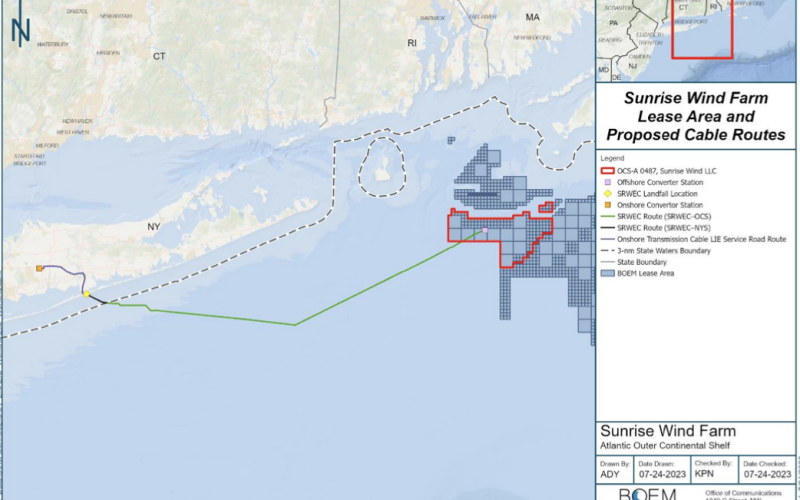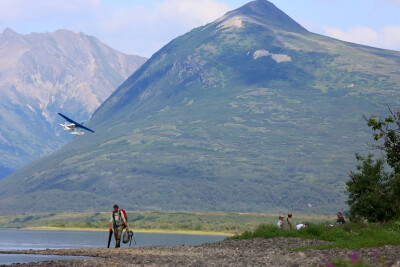The Sunrise Wind energy project should be reduced in size to protect cod habitat off southern New England and avoid areas where seafloor geology will make it difficult to build wind turbine foundations, a newly completed environmental assessment concludes.
Project partners Ørsted and Eversource originally proposed up to 94 turbines on an 86,823-acre lease 16.4 nautical miles south of Martha’s Vineyard, Mass., and 26.5 nm east of Montauk, N.Y. The latest preferred alternative affirmed by the federal Bureau of Ocean Energy Management would hold the number of turbines to 84 machines, “to accommodate geotechnical feasibility of the project, reduce impacts to benthic habitat and Atlantic cod, and meet the energy needs of New York, Massachusetts and Rhode Island,” the agency said Monday.
The revision would still allow a maximum nameplate power rating of 924 megawatts, and help address longstanding concerns of fishermen, scientists and the National Marine Fisheries Service over impacts on seafloor habitat and Atlantic cod.
Removing and shifting some turbine locations would also avoid areas of glauconite sands – a sticky mineral in the seafloor that is resistant to pile driving.
"We carefully considered input from our government partners, key stakeholders and the public for the Final Environmental Impact Statement for Sunrise Wind,” BOEM Director Elizabeth Klein said in announcing the EIS release. “This document represents a thorough and comprehensive analysis of the potential environmental impacts of the project and is another milestone in achieving President Biden’s ambitious clean-energy goals."
On the same day BOEM announced another proposed offshore wind lease sale, offering two tracts – one off Delaware and Maryland, another off Virginia.
The “Central Atlantic” offering would consist of Lease Area A-2, 101,443 acres about 26.4 nautical miles from Delaware Bay, and Lease Area C-1 of 176,505 acres 35 miles from the mouth of Chesapeake Bay. BOEM’s announcement opens a 60-day public comment period starting today on whether the agency should offer them in a proposed 2024 lease sale.
The proposal is a slight pullback from July 2023, when BOEM announced three Central Atlantic Wind Energy Areas (WEAs), while indicating that WEA B-1 still needed more study.
“Today’s proposed sale notice does not include WEA B-1, which is located approximately 23.5 nm offshore Ocean City, MD. BOEM has removed that WEA from this proposed lease sale due to the significant costs and mitigation that would be required,” according to the agency. “However, WEA B-1 may be considered as part of a potential second lease sale in the Central Atlantic, which could occur as soon as 2025.”
BOEM would include lease stipulations for wind developers bidding on the leases, including:
- Providing bidding credits to bidders that commit to supporting workforce training programs for the offshore wind industry, developing a domestic supply chain for the offshore wind industry or a combination of both.
- Providing bidding credits to bidders that establish and contribute to a fisheries compensatory mitigation fund or contribute to an existing fund to mitigate potential negative impacts from offshore wind development in the Central Atlantic to commercial and for-hire recreational fisheries.
“Developing these Central Atlantic leases will be crucial to helping the mid-Atlantic states meet their emissions reduction targets,” said Frank Macchiarola, chief policy officer at the American Clean Power Association. “We look forward to working with federal, state, and other stakeholders as additional lease sales are considered in a second round.”
“While we celebrate these milestones, ensuring a stable commercial framework through successful state offshore wind solicitations, inflation adjustments and workable tax credit guidance is critically important for building a viable and abundant clean energy future,” said Macchiarola.







